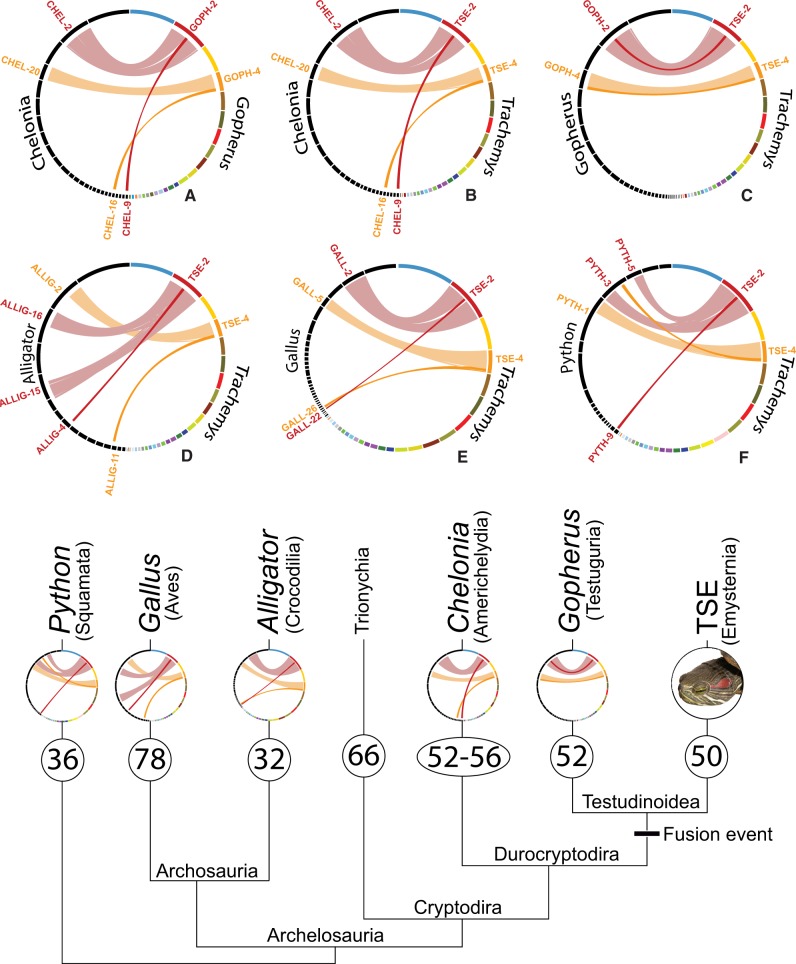Fig. 1.
—Circos synteny diagrams displaying chromosomal fissions/fusions within diapsids. The dark red and dark orange lines represent homologous clusters of SCOs found on chromosomes not found on testudinoid genomes (TSE and Gopherus) and likely fused with TSE and Gopherus chromosomes 2 and 4. Synteny diagram (A) reveals the fusion of two Chelonia chromosomes 16 and 9 with Gopherus chromosomes 2 and 4 respectively. Synteny diagram (B) reveals the fusion of two Chelonia chromosomes 16 and 9 with TSE chromosomes 2 and 4 respectively. Synteny diagram (C) reveals that for both Gopherus and TSE the dark red and dark orange cluster of SCOs have fused with TSE and Gopherus chromosomes 2 and 4. Synteny diagram (D) and (E) reveal the archosaurian Alligator chromosomes 4 and 11 and Gallus chromosomes 26 and 22 have fused with testudinoid (Gopherus and TSE) chromosomes. Synteny diagram (F) reveals that Python chromosome 9 has fused with Gopherus and TSE chromosome 2. The dark orange cluster of SCOs from TSE chromosome 4 are part of Python chromosome 5. The colored bars in rings represent TSE chromosomes except in (A), where colored bar represent Gopherus. Black bars represent other chromosomes. Note that all single relocations have been removed for clarity. For the phylogenetic tree of reptile and avian genomes used in this study, the number in ovals represents the hypothesized ancestral 2n number of chromosome for each lineage based on Bickham and Carr (1983) and the circular diagrams represent the synteny diagrams highlighting the chromosomes involved in the indicated fusion event. TSE and Gopherus share the same fusion of these two clusters (diagram C).

